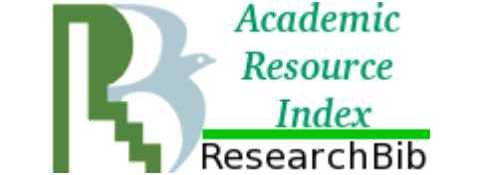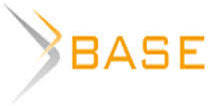COUNTING AND ANALYTICAL SUPPORT FOR THE MANAGEMENT OF THE FINANCIAL CONDITION OF ORGANIZATIONS CASE STUDY XYZ CORPORATION
Abstract
Effective management of an organization's financial condition necessitates comprehensive accounting and analytical support systems. This paper examines the role of accounting and analytical tools in facilitating informed decision-making and strategic planning within organizations. It explores how financial data is collected, processed, and analyzed to provide insights into the financial health of an organization. Additionally, the paper discusses various accounting methods, financial ratios, and performance indicators commonly utilized in assessing an organization's financial condition. Furthermore, it investigates the significance of budgeting, forecasting, and variance analysis in monitoring and managing financial performance. The discussion underscores the importance of integrating accounting and analytical support systems into the management framework to optimize organizational efficiency, mitigate risks, and enhance financial stability. Through a thorough examination of these principles, organizations can achieve greater transparency, accountability, and sustainability in their financial operations.
Keywords: accounting, analytical support, financial management, organizations, financial condition, decision-making, strategic planning, financial reporting, per-formance evaluation, risk mitigation
Introduction
In the dynamic landscape of modern business, the effective management of financial resources is paramount to the success and sustainability of organizations. Accounting and analytical support play a pivotal role in providing insights and oversight into the financial condition of businesses, offering a comprehensive understanding of their economic health and performance. This multifaceted discipline goes beyond traditional bookkeeping and financial reporting, evolving into a strategic tool that aids management in making informed decisions, mitigating risks, and steering the organization towards its financial objectives.
Accounting serves as the language of business, systematically recording, classifying, and summarizing financial transactions. It provides a structured framework for the analysis of financial data, ensuring accuracy and compliance with regulatory standards. However, in the contemporary business environment, where complexity and uncertainty are inherent, analytical support becomes indispensable. By leveraging advanced analytical tools and methodologies, organizations can extract meaningful insights from financial data, uncover trends, and identify key performance indicators [Horngren C. T., Sundem G. L., 2017].
The marriage of accounting and analytical support empowers management with the ability to assess the financial health of the organization in real-time, facilitating proactive decision-making. This synergy allows for the identification of cost-saving opportunities, optimization of resource allocation, and the formulation of strategic plans that align with financial objectives. Moreover, it enables organizations to adapt to market dynamics, anticipate potential challenges, and capitalize on emerging opportunities.
Beyond the traditional financial statements, accounting and analytical support delve deeper into the intricacies of financial data. With the advent of technology, sophisticated financial software and data analytics tools enable organizations to not only streamline their accounting processes but also conduct intricate financial modelling and scenario analysis. This allows management to simulate various business scenarios, assess the potential impact of decisions, and strategize effectively for both short-term objectives and long-term sustainability.
In addition to financial forecasting and risk management, the amalgamation of accounting and analytical support aids in performance measurement. Key performance indicators (KPIs) derived from financial data help benchmark the organization's success against industry standards and internal goals. By monitoring these metrics, management gains valuable insights into operational efficiency, profitability, and overall organizational effectiveness. This information serves as a compass, guiding strategic initiatives and ensuring that resources are deployed yudiciously to maximize returns [Louwers T. J., Blay A. D., 2017].
This introduction explores the symbiotic relationship between accounting and analytical support, emphasizing their collective role in providing management with a comprehensive and actionable understanding of the financial landscape. As organizations navigate the complexities of the global business arena, the integration of accounting and analytical support emerges as an indispensable strategy for achieving financial resilience, fostering growth, and ensuring long-term success.
The purpose of the Researchers. The purpose of this Researchers is to examine the crucial role of accounting and analytical support in managing the financial condition of organizations. By delving into various accounting methods, analytical tools, and financial performance indicators, the aim is to provide insights into how these elements contribute to informed decision-making and strategic planning within organizations. Additionally, the work aims to highlight the importance of integrating accounting and analytical support systems into the management framework to enhance transparency, efficiency, and sustainability in managing the financial health of organizations. Through this exploration, the work seeks to offer practical guidance for optimizing financial management practices and mitigating risks in today's dynamic business environment.
Materials and methods of research:
Literature Review: Researchers often start by conducting a thorough review of existing literature on accounting principles, financial analysis techniques, and management practices related to financial condition assessment. This helps in identifying key concepts, theories, and methodologies.
Data Collection:
Surveys/Questionnaires: Surveys may be administered to financial managers or executives to gather insights into their use of accounting and analytical tools in managing the organization's financial condition.
Interviews: In-depth interviews with financial professionals or managers can provide qualitative insights into the challenges and strategies involved in financial management.
Case Studies: Case studies of specific organizations or industries may be conducted to analyze real-world applications of accounting and analytical support in managing financial conditions.
The main part
Data Analysis: Qualitative Analysis: Data from interviews or case studies may be analyzed thematically to identify patterns, challenges, and best practices in financial management.
Ethical Considerations: Researchers must adhere to ethical guidelines regarding data privacy, confidentiality, and integrity in handling financial data obtained from organizations.
By employing these materials and methods, researchers can gain valuable insights into the role of accounting and analytical support in managing the financial condition of organizations, contributing to advancements in financial management practices and decision-making processes.
Role of Accounting in Financial Management. He role of accounting in financial management is multifaceted and integral to the overall success and sustainability of an organization. Accounting serves as the backbone of financial management, providing a systematic and organized framework for recording, classifying, and summarizing financial transactions. The following points highlight the key aspects of the role of accounting in financial management:
Financial Recording and Documentation: Systematic Record-Keeping: Accounting involves the meticulous recording of financial transactions, ensuring accuracy and completeness in documenting income, expenses, assets, liabilities, and equity [Simkin M. G., Rose J. M., 2015].
Transaction Classification: Through journals and ledgers, accounting categorizes and organizes financial data, providing a clear and structured overview of an organization's financial activities.
Financial Reporting: Communication of Financial Health: Accounting generates comprehensive financial reports, such as balance sheets, income statements, and cash flow statements, which offer insights into the organization's financial position and performance.
Stakeholder Transparency: These reports are essential for communicating financial information to stakeholders, including investors, creditors, regulatory authorities, and internal management.
Budgeting and Planning: Historical Data Utilization: Accounting provides historical financial data, which is crucial for developing budgets and forecasts.
Resource Allocation: Budgets derived from accounting information assist in setting financial goals, allocating resources efficiently, and planning for future operational needs.
Performance Analysis: Evaluation Metrics: Accounting facilitates the measurement of financial performance through the calculation of various ratios and financial metrics.
Trend and Variance Analysis: Trends and variances identified through accounting data analysis help management assess the efficiency and effectiveness of business operations.
Decision Support: Informed Decision-Making: Accounting information aids management in making informed decisions by providing relevant and timely financial data.
Cost Analysis: Cost accounting, a subset of accounting, helps evaluate the costs associated with different activities, guiding decisions related to pricing, production, and resource allocation.
Compliance and Governance:
Regulatory Adherence: Accounting ensures compliance with financial regulations, accounting standards, and tax laws, reducing the risk of legal issues.
Ethical Financial Practices: By promoting transparency and accountability, accounting contributes to good governance practices within an organization.
Risk Management: Identification and Assessment: Accounting systems help identify and assess financial risks by monitoring key indicators and analyzing potential exposures.
Financial Statements for Risk Evaluation: Financial statements provide a basis for evaluating risks associated with liquidity, solvency, and operational aspects.
Strategic Planning: Long-Term Financial Strategies: Accounting information is crucial for formulating and executing long-term financial strategies aligned with organizational goals.
Adaptability: In dynamic business environments, accounting aids management in adapting financial plans to changing economic conditions and emerging opportunities or challenges.
Accounting in financial management goes beyond the routine task of recording transactions; it emerges as a dynamic and strategic tool. By providing accurate, timely, and relevant financial information, accounting empowers organizations to navigate uncertainties, optimize resource allocation, and make informed decisions that contribute to sustainable financial health and success [Romney M. B., & Steinbart P. J., 2018].
Strategic Decision-Making. Strategic decision-making stands as the linchpin in the success and longevity of organizations, encapsulating a dynamic process that guides leaders in aligning their actions with long-term objectives and responding adeptly to evolving internal and external landscapes. At its core, strategic decision-making involves assessing the organization's strengths, weaknesses, opportunities, and threats (SWOT analysis) to formulate a comprehensive understanding of its position in the market. This process extends beyond routine operational choices, encompassing pivotal determinations that shape the overarching direction of the business. Strategic decisions often involve resource allocation, market positioning, product or service innovation, and partnerships, requiring a careful evaluation of potential risks and rewards. Informed by data analytics, market research, and a nuanced understanding of industry trends, leaders engage in foresight and scenario planning to anticipate future challenges and capitalize on emerging opportunities. Effective strategic decision-making is characterized by a holistic perspective, considering the interplay of various internal and external factors, as well as a willingness to adapt strategies in response to changing circumstances. Ultimately, strategic decision-making is the compass that guides organizations through uncertainty, ensuring they remain agile, competitive, and well-positioned to achieve their long-term goals [Hilton R. W., Maher M. W., & Selto F. H., 2020].
Challenges and Future Trends: Cybersecurity Concerns:
As technology integration accelerates, the accounting profession faces a growing challenge in safeguarding sensitive financial information from cyber threats. The increasing reliance on digital platforms and cloud-based systems amplifies the risk of data breaches, demanding robust cybersecurity measures to protect confidential financial data and maintain the trust of stakeholders.
Talent Shortage and Skill Evolution: The evolving technological landscape requires accountants to acquire new skills, particularly in data analytics, cybersecurity, and technology implementation. A shortage of professionals with these specialized skills poses a challenge for the accounting industry, necessitating a concerted effort in upskilling the workforce to meet the demands of the digital era [Zimmerman J. L., & Yahya-Zadeh M., 2011].
Environmental, Social, and Governance (ESG) Reporting:
In response to societal expectations and regulatory pressures, there is a growing emphasis on ESG reporting within financial management. Accounting professionals are now tasked with integrating sustainability metrics into financial reporting, addressing the environmental and social impact of business operations, and ensuring transparency in corporate governance.
Continuous Adaptation to Emerging Technologies:
The rapid evolution of technologies such as machine learning and data analytics presents both opportunities and challenges for the accounting profession. Accountants must stay abreast of these advancements to harness their benefits in enhancing financial analysis, risk management, and decision-making while grappling with the complexities of integrating and interpreting vast amounts of data [Chandra P., & Sharma S., 2019].
Increased Demand for Real-time Reporting:
In a fast-paced business environment, stakeholders expect real-time access to financial information. This shift towards instantaneous reporting necessitates the implementation of technologies that enable real-time data capture, processing, and analysis, challenging traditional accounting practices that may be more accustomed to periodic reporting cycles.
Regulatory Technology (RegTech) Adoption:
The rise of RegTech, encompassing technologies designed to assist in regulatory compliance, introduces a new dimension to financial management. Accountants need to navigate the integration of RegTech solutions, ensuring they enhance compliance processes, mitigate risks, and streamline reporting obligations in the face of evolving regulatory landscapes [Kinney M. R., & Raiborn C. A., 2018].
Case study: XYZ corporation
Introduction: XYZ Corporation, a multinational conglomerate operating in various sectors, recognized the need to enhance its financial management practices to maintain competitiveness and sustain growth. This case study examines how XYZ Corporation implemented accounting and analytical support systems to effectively manage its financial condition and drive strategic decision-making.
Background: XYZ Corporation operates in industries ranging from technology and manufacturing to healthcare and finance. With a diverse portfolio of businesses, the company faced challenges in consolidating financial data, analyzing performance metrics, and forecasting future trends accurately. Additionally, rapid market changes and regulatory requirements necessitated a more proactive approach to financial management.
Challenges: Complex Financial Structure: XYZ Corporation's diverse business units operated with different accounting systems and reporting standards, making it challenging to consolidate financial information and assess overall performance.
Inefficient Budgeting Processes: Manual budgeting processes resulted in delays and inaccuracies, hindering the company's ability to allocate resources effectively and align budgets with strategic objectives.
Limited Analytical Capabilities: The lack of advanced analytical tools prevented XYZ Corporation from conducting comprehensive financial analysis and gaining actionable insights into performance drivers and risks [Warren C. S., Reeve J. M., & Duchac J., 2020].
Solution: To address these challenges and optimize financial management practices, XYZ Corporation implemented the following solutions:
Unified Financial Platform: The company adopted an integrated Enterprise Resource Planning (ERP) system to standardize accounting practices across business units, streamline data consolidation, and improve reporting accuracy. This provided management with real-time access to consolidated financial data, facilitating better decision-making and performance monitoring.
Advanced Analytical Tools: XYZ Corporation deployed advanced financial analysis software capable of generating customized reports, conducting scenario analysis, and performing predictive modeling. This empowered finance teams to analyze key performance indicators, identify trends, and proactively address financial risks and opportunities.
Automated Budgeting and Forecasting: Leveraging the capabilities of the ERP system, XYZ Corporation automated budgeting processes and developed sophisticated forecasting models. This enabled the company to generate accurate forecasts, align budgets with strategic goals, and adapt quickly to changing market conditions [Tokar E.V., Kononenko R.V., 2021]
The implementation of accounting and analytical support systems yielded significant improvements in XYZ Corporation's financial management practices:
Enhanced Visibility and Control: The unified financial platform provided management with a comprehensive view of the company's financial health, enabling better control over costs, revenue streams, and cash flow.
Improved Decision-Making: The availability of real-time financial data and advanced analytical tools empowered management to make data-driven decisions, optimize resource allocation, and identify growth opportunities across business units.
Increased Efficiency and Agility: Automation of budgeting processes and forecasting activities reduced manual effort, minimized errors, and enhanced agility in responding to market dynamics, regulatory changes, and strategic imperatives.
Conclusion
However, with these advancements come a new set of challenges and future trends that demand the attention of the accounting profession. Cybersecurity concerns, the need for talent with evolving skills, the integration of ESG reporting, continuous adaptation to emerging technologies, the demand for real-time reporting, and the adoption of Regulatory Technology (RegTech) all underscore the dynamic nature of the field. Navigating these challenges is not only a testament to the resilience of the accounting profession but also an opportunity for accountants to solidify their role as strategic partners in organizational success.
As businesses operate in a globalized environment, facing diverse regulatory frameworks and societal expectations, the importance of sound financial management becomes increasingly pronounced. Accounting and analytical support are not merely back-office functions but catalysts for organizational agility, growth, and sustainability. Embracing these functions as strategic assets positions organizations to not only meet compliance requirements but also proactively navigate uncertainties, seize opportunities, and foster financial resilience in an ever-changing business landscape. In essence, the marriage of accounting and analytical support is not yust a means to an end; it is the foundation upon which organizations can build a future of informed decision-making, adaptive strategies, and enduring financial success.
By implementing accounting and analytical support systems, XYZ Corporation successfully optimized its financial management practices, enhanced decision-making capabilities, and achieved greater efficiency and agility in navigating complex business environments. The case study underscores the importance of leveraging technology and data-driven insights to manage financial condition effectively and drive sustainable growth.

















Reference lists